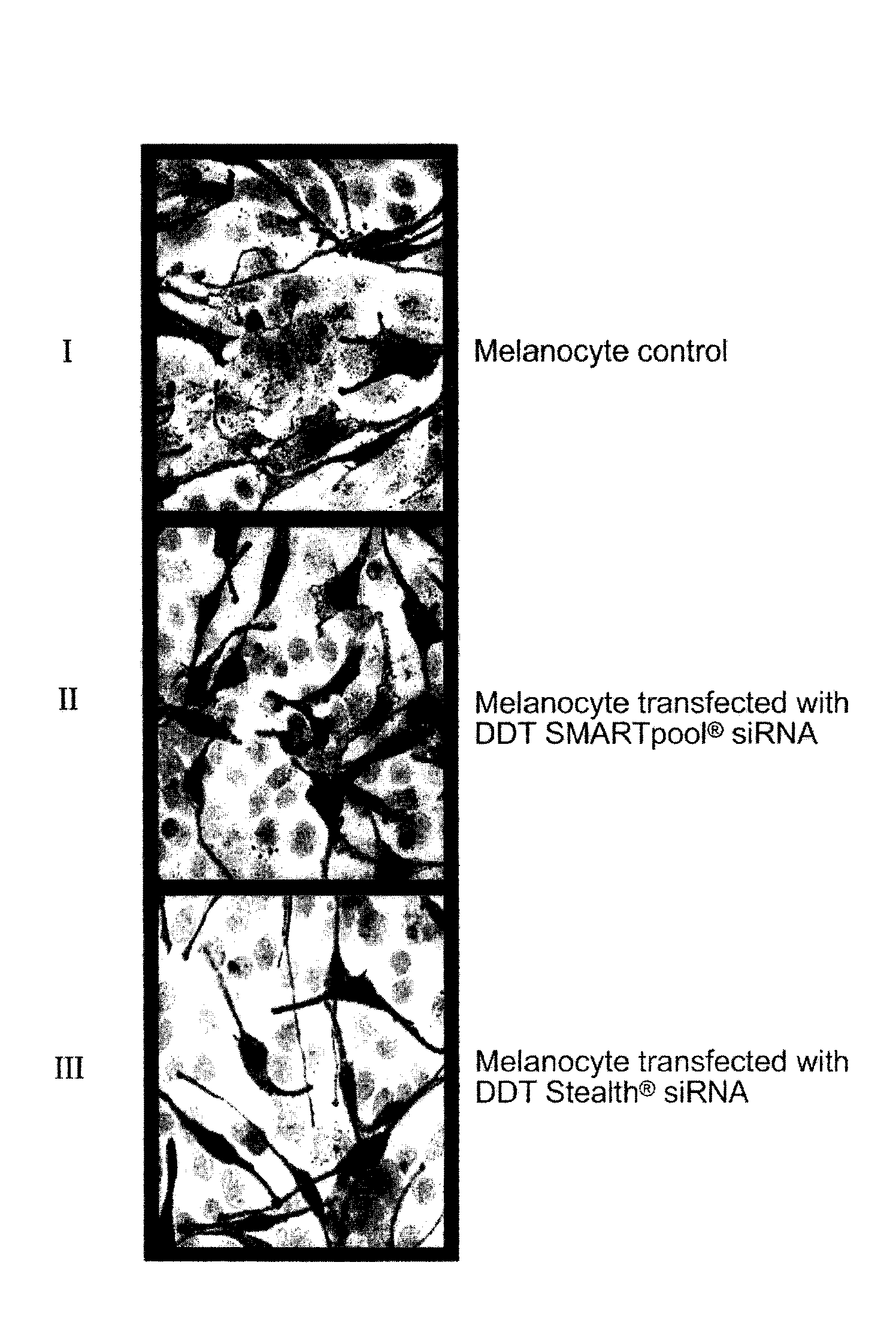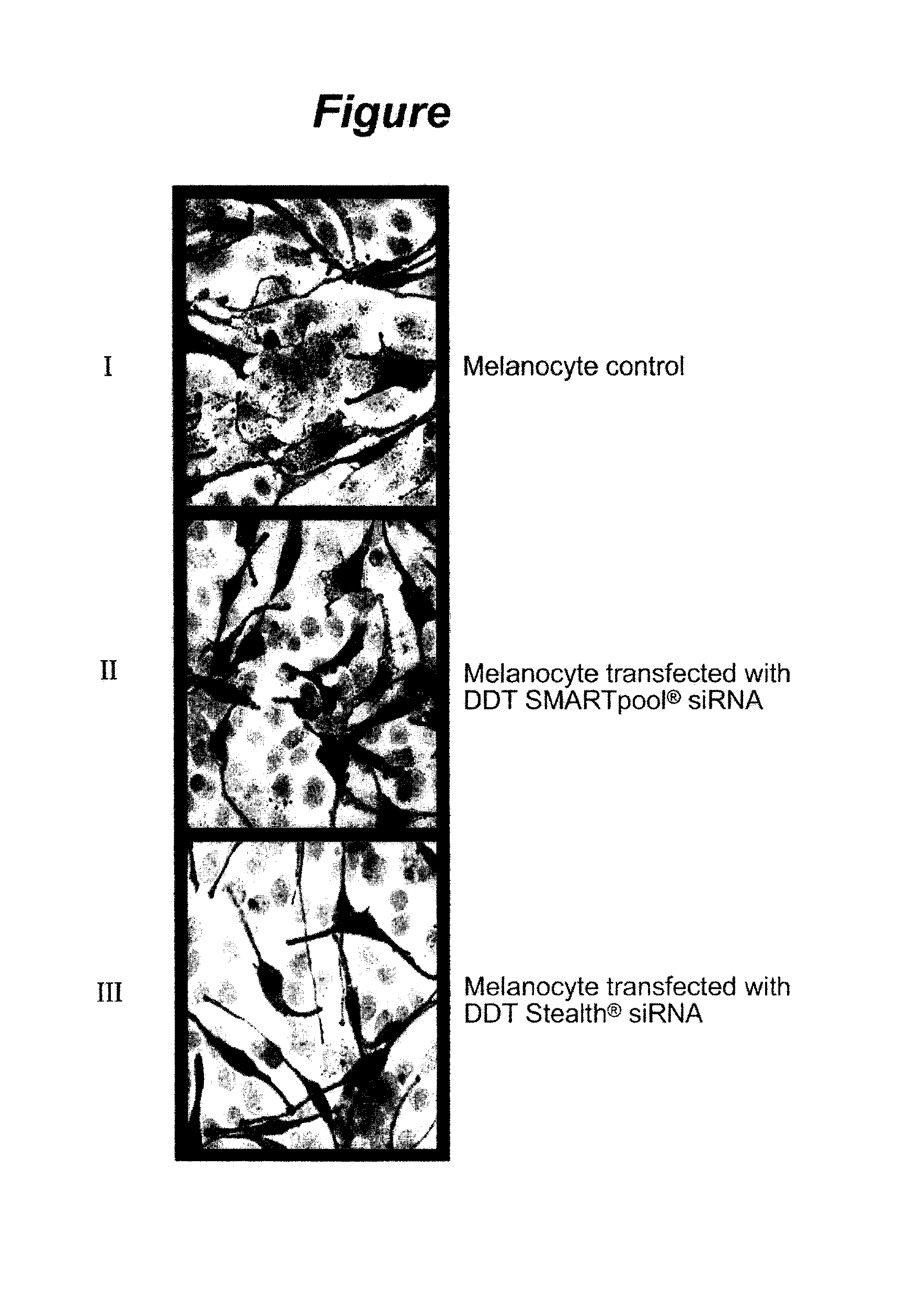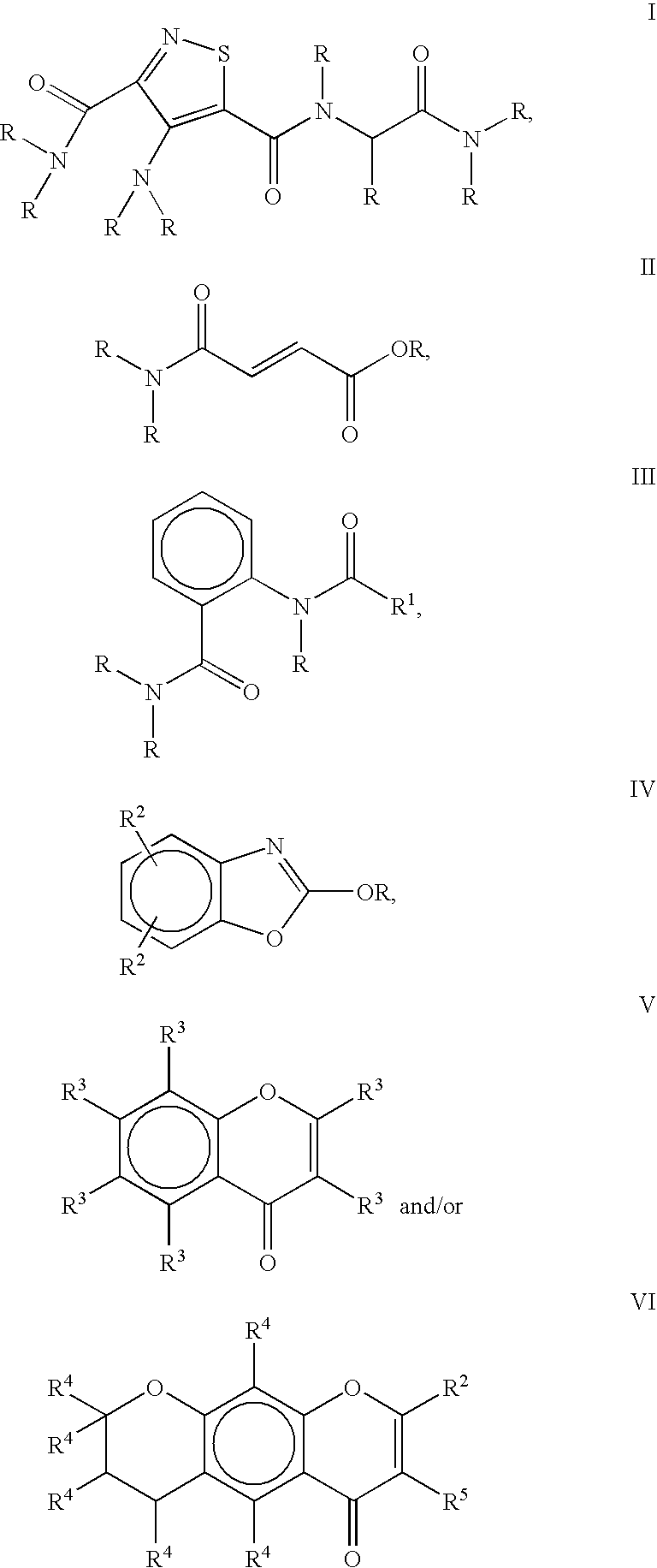Method and Composition for Color Modulation
a color modulation and composition technology, applied in the field of method and composition for color modulation, can solve the problems of low efficacy or undesirable side effects, products developed so far, and none of the additional information above describes a method for skin color modulation, and achieve the effect of inhibiting the
- Summary
- Abstract
- Description
- Claims
- Application Information
AI Technical Summary
Benefits of technology
Problems solved by technology
Method used
Image
Examples
example 1
[0064]Melanosome transfer was assessed by using a coculture assay. Human epidermal melanocytes were grown to 60-80% confluency. The cells were transfected with siRNA (small interfering RNA) according to the Sequitur, Inc., art recognized and available protocol then overlaid with the HaCaT keratinocytes after 72 hours. The cocultures were incubated in keratinocyte growth medium (like the medium made available by PromoCell GmbH) without phorbol ester, and were fixed 48 hours post-overlay for detection of melanin pigment by the Fontana-Masson staining procedure. Slides were visualized using a light microscope (Carl Zeiss MicroImaging GmbH) and images were acquired using art recognized AxioVision software. Ten random high power fields were analyzed per coculture sample.
[0065]Coculture experiments to test for melanosome transfer in melanocytes transfected with DDT siRNA demonstrated that there was a decrease in melanosome transfer after DDT knockdown (inhibition), surprisingly suggesting...
example 2
Preparation of D-Dopachrome Substrate and Assay
[0066]A 125-mM sodium periodate working solution was prepared in H2O in an amber 5-mL vial (prepared fresh on the day of the assay). 4.3 mg of dihydroxy-D-phenylalanine (D-dopa) were weighed into a 20 mL scintillation vial equipped with a pierceable septa screw cap. With the use of a liquid transfer cannula, 12 mL of degassed buffer was first transferred into a 15 mL graduated conical tube and subsequently poured into the scintillation vial containing the D-dopa. The D-dopa was dissolved for ten (10) minutes while stirring under nitrogen. The resulting working solution was 1.8 mM. Once sodium periodate was added to the dissolved D-dopa, the resulting D-dopachrome was utilized immediately to prevent substrate degradation.
[0067]Concentrations were based on a final reaction volume of 200 μL. A total of 75 μL of buffer (100 mM potassium phosphate, pH 6.8) was added to each well of a clear flat bottom 96-well microtiter plate. To the blank c...
example 3
[0073]A stock solution of 10 mM L-dopa (3,4-Dihydroxyphenylalanine, Sigma Cat #D9628) was prepared in sodium phosphate buffer (100 mM, pH 7.0) along with a stock solution of 0.1 mg / mL (605 units / ml) mushroom tyrosinase (Sigma cat #T7755) in phosphate buffer and stored at room 4° C. until use.
[0074]Test compounds (dissolved in DMSO) were first diluted in phosphate buffer to working concentrations of 1 mM. For each test, 150 μL of phosphate buffer, 10 μL of the L-dopa stock and 20 μL of each compound were added to each well of a 96 well clear bottom microtiter plate and mixed three times. 20 μL of mushroom tyrosinase stock solution was added, mixed and the absorbency read at 475 nm at 0, 2, 4, and 6.5 minutes. The points were plotted as absorbency vs. time and the slope of the line calculated. Values are expressed as the percent of the respective untreated control reaction. The final DMSO concentration in each sample was less than or equal to 1.0%
TABLED-DopachromeMushroomTautomerase a...
PUM
| Property | Measurement | Unit |
|---|---|---|
| Percent by mass | aaaaa | aaaaa |
| Weight | aaaaa | aaaaa |
| Color | aaaaa | aaaaa |
Abstract
Description
Claims
Application Information
 Login to View More
Login to View More - R&D
- Intellectual Property
- Life Sciences
- Materials
- Tech Scout
- Unparalleled Data Quality
- Higher Quality Content
- 60% Fewer Hallucinations
Browse by: Latest US Patents, China's latest patents, Technical Efficacy Thesaurus, Application Domain, Technology Topic, Popular Technical Reports.
© 2025 PatSnap. All rights reserved.Legal|Privacy policy|Modern Slavery Act Transparency Statement|Sitemap|About US| Contact US: help@patsnap.com



